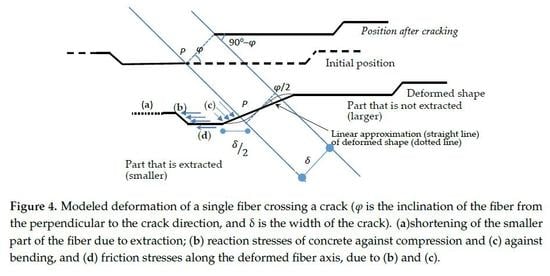A Model for the Prediction of the Tensile Strength of Fiber-Reinforced Concrete Members, Before and After Cracking
Abstract
:1. Introduction
2. Materials and Methods
2.1. Model Description
2.2. Volumetric Contribution of Fibers
2.3. Influence of Crack Widening
2.3.1.Geometrical Limitations
2.3.2. Influence of Crossing Angle
3. Results
3.1. Case Study
3.2. Quantification of Volumetric Distribution of Fibers
4. Conclusions
Author Contributions
Conflicts of Interest
Appendix A
| Ac | area of concrete |
| B | pullout resistant force of a fiber |
| Bud | design value of maximum pullout force of a fiber, in the case that the fiber reaches the yield stress |
| Fextr,ϕ,perp | total pullout resistance of fibers forming an angle ϕ perpendicular to crack direction |
| Nϕ | number of fibers that cross a crack, forming an angle ϕ perpendicular to crack direction |
| df | diameter of a fiber |
| hf | hook height (Figure 1) |
| fctm | tensile strength of concrete |
| fbd | ultimate bond stress between fiber and concrete (EC2-1, cl. 8.4.2) |
| fsy | tensile yield stress of a fiber |
| fα | the bearing capacity of concrete against compression inside a bent of a fiber, that can be calculated as (EC2-1, cl. 8.4.2): |
| αb | the distance (perpendicular to the crack plane) between axes of adjacent fibers. In case of uniformly oriented fibers, this can be efficiently approximated by
Then
|
| αϕ | modification factorof the volumetric ratio, regarding angle φ |
| lf | total length of fiber (refer to Figure 1) |
| l1 | length of middle part of fiber (refer to Figure 1) |
| lav | for one fiber, is the length of the smaller of the two parts of it, as divided by a crack plane; for many fibers is the average of the smaller parts, practically (refer to Figure 1) |
| n | number of effective fibers that cross area A (function of the volumetric ratio) |
| r | effectiveness ratio for fibers [refer to section 3.2] |
| μ | friction coefficient between fiber and concrete, considered here as μ = 0.45. |
| ρ | volumetric ratio of fibers |
| ρact | active volumetric ratio of fibers |
| τfr | friction due to compression inside a bent fiber, τfr = μfα |
| ϕ | angle formed by a fiber perpendicular to crack direction |
Appendix B
| Property | Quantity | Property | Quantity |
|---|---|---|---|
| Diameter df (mm) | 0.75 | Long. dim. of hook hf (mm) | 2.50 |
| Total longitudinal dimension lf (mm) | 29.0 | Angle of hook θ (°) | 26.5 |
| Central straight part l1 (mm) | 14.0 | Total Length ltot (mm) | 30.2 |
| Long. dimension of hook (mm) | 7.50 | Area Af (mm2) | 0.44 |
| Horizontal part l2,h (mm) | 2.49 | Volume Vf (mm3) | 13.3 |
| Diagonal part l2,d (mm) | 5.60 | Vol. of straight part V1 (mm3) | 6.18 |
| Horizontal T l2,d’ (mm) | 5.01 | Volumetric ratio | 0.50% |
| Capacity to tension fsy (MPa) | 1150 | Modulus of elasticity Es (MPa) | 2 × 105 |

| Property | Quantity | Property | Quantity |
|---|---|---|---|
| Length L (mm) | 600 | Compressive Strength fck (MPa) | 25.0 |
| Width B (mm) | 300 | Tensile Strength fctm (MPa) | 2.565 |
| Height H (mm) | 300 | Modulus of Elasticity (GPa) | 30.5 |
References
- Sorensen, C.O.; Berge, E.A.; Saga, P.E.; Østvold, A. Factors affecting the efficiency of fibers in concrete on crack reduction. Open J. Civ. Eng. 2013, 3, 80–85. [Google Scholar] [CrossRef]
- Buratti, N.; Mazzotti, C.; Savoia, M. Post-cracking behavior of steel and macro-synthetic fiber-reinforced concretes. Constr. Build. Mater. 2011, 25, 2713–2722. [Google Scholar] [CrossRef]
- Mehran, K.; Majid, A. Use of glass and nylon fibers in concrete for controlling early age micro cracking in bridge decks. Constr. Build. Mater. 2016, 125, 800–808. [Google Scholar]
- Boscato, G.; Russo, S. Experimental investigation on repair of RC pavements with SFRC. In Proceedings of the 2nd International Conference on Concrete Repair, Rehabilitation and Retrofitting (ICCRRR), Cape Town, South Africa, 24–26 November 2008; pp. 449–450. [Google Scholar]
- Kurihara, N.; Kunieda, M.; Kamada, T.; Uchida, Y.; Rokugo, K. Tension softening diagrams and evaluation of properties of steel fiber reinforced concrete. Eng.Fract. Mech. 2000, 65, 235–245. [Google Scholar] [CrossRef]
- Holschemacher, K.; Mueller, K.; Ribakov, Y. Effect of steel fibers on mechanical properties of high-strength concrete. Mater. Des. 2010, 31, 2604–2615. [Google Scholar] [CrossRef]
- Yang, J.M.; Min, K.H.; Shin, H.O.; Yoon, Y.S. Effect of steel and synthetic fibers on flexural behavior of high strength concrete beams reinforced with FRP bars. Compos. Part B 2012, 43, 1077–1086. [Google Scholar] [CrossRef]
- Meda, A.; Minelli, F.; Plizzari, G.A. Flexural behavior of RC beams in fiber reinforced concrete. Compos. Part B 2012, 43, 2930–2937. [Google Scholar] [CrossRef]
- Soutsos, M.N.; Lampropoulos, A.P. Flexural performance of fiber reinforced concrete made with steel and synthetic fibers. Constr. Build. Mater. 2012, 36, 704–710. [Google Scholar] [CrossRef]
- Olivito, R.S.; Zuccarello, F.A. An experimental study on the tensile strength of steel fiber reinforced concrete. Compos. Part B 2010, 41, 246–255. [Google Scholar] [CrossRef]
- Choumanidis, D.; Badogiannis, E.; Nomikos, P.; Sofianos, A. The effect of different fibers on the flexural behaviour of concrete exposed to normal and elevated temperatures. Constr. Build. Mater. 2016, 129, 266–277. [Google Scholar] [CrossRef]
- Balaguru, P.; Najm, H. High-performance fiber-reinforced concrete mixture proportions with high fiber volume fractions. ACI Mater. J. 2004, 101, 281–286. [Google Scholar]
- Lee, J.H.; Chob, B.; Choic, E. Flexural capacity of fiber reinforced concrete with a consideration of concrete strength and fiber content. Constr. Build. Mater. 2017, 138, 222–231. [Google Scholar] [CrossRef]
- Deluce, J.R.; Lee, S.-C.; Vecchio, F.J. Crack model for steel fiber-reinforced concrete members containing conventional reinforcement. ACI Struct. J. 2014, 111, 94–102. [Google Scholar]
- Lee, C.; Kim, H. Orientation factor and number of fibers at failure plane in ring-type steel fiber reinforced concrete. Cem.Concr. Res. 2010, 40, 810–819. [Google Scholar] [CrossRef]
- Alberti, M.G.; Enfedaque, A.; Galvez, J.C. On the prediction of the orientation factor and fiber distribution of steel and macro-synthetic fibers for fiber-reinforced concrete. Cem. Concr. Compos. 2017, 77, 29–48. [Google Scholar] [CrossRef]
- Lee, S.-C.; Oh, J.-H.; Cho, J.-Y. Fiber orientation factor on rectangular cross-section in concrete Members. IACSIT Int. J. Eng. Technol. 2015, 7, 470–473. [Google Scholar]
- Georgiadi-Stefanidi, K.; Mistakidis, E.; Pantousa, D.; Zygomalas, M. Numerical modeling of the pull-out of hooked steel fibres from high-strength cementitious matrix, supplemented by experimental results. Constr. Build. Mater. 2010, 24, 2489–2506. [Google Scholar] [CrossRef]
- Afroughsabet, V.; Biolzi, L.; Ozbakkaloglu, T. High-performance fiber-reinforced concrete: A review. J. Mater. Sci. 2016, 14, 6517–6551. [Google Scholar] [CrossRef]
- Baltay, P.; Gjelsvik, A. Coefficient of friction for steel on concrete at high normal stress. J. Mater. Civ. Eng. 1990, 2, 46–49. [Google Scholar] [CrossRef]



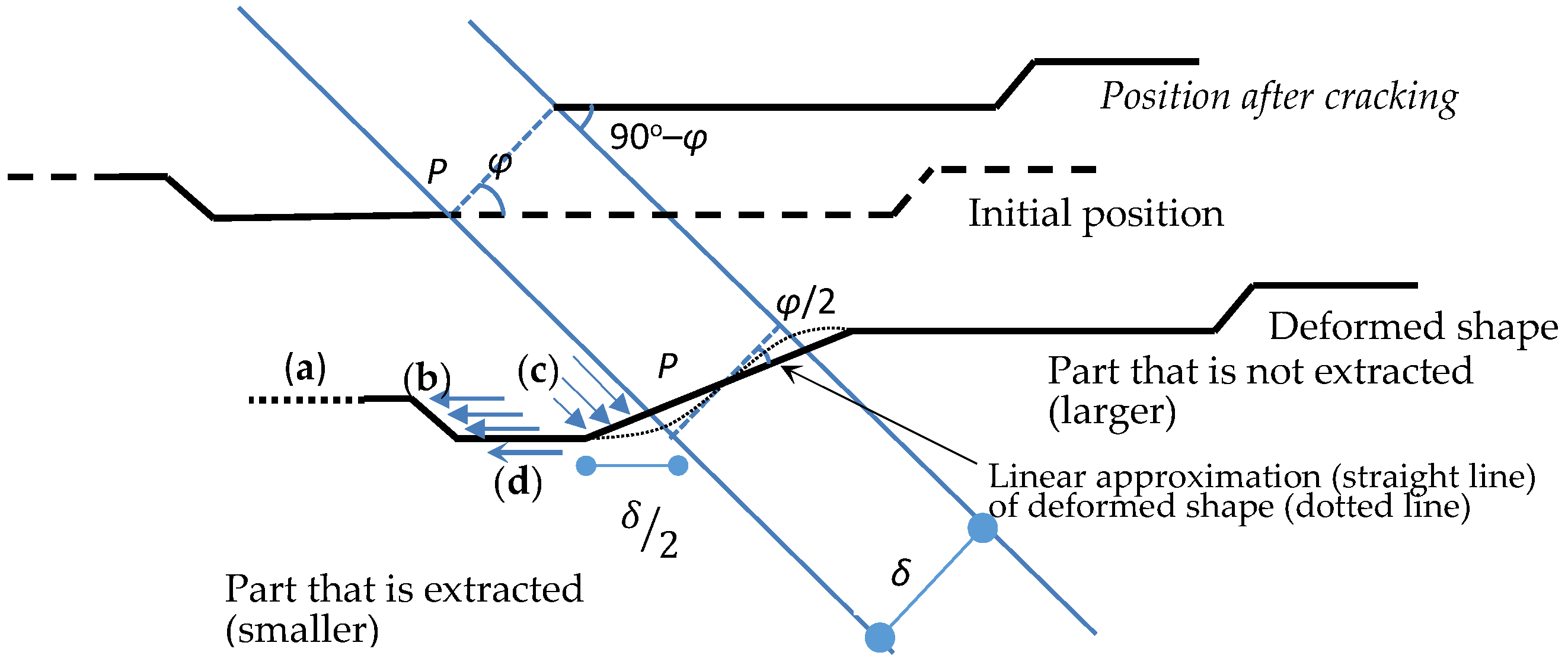
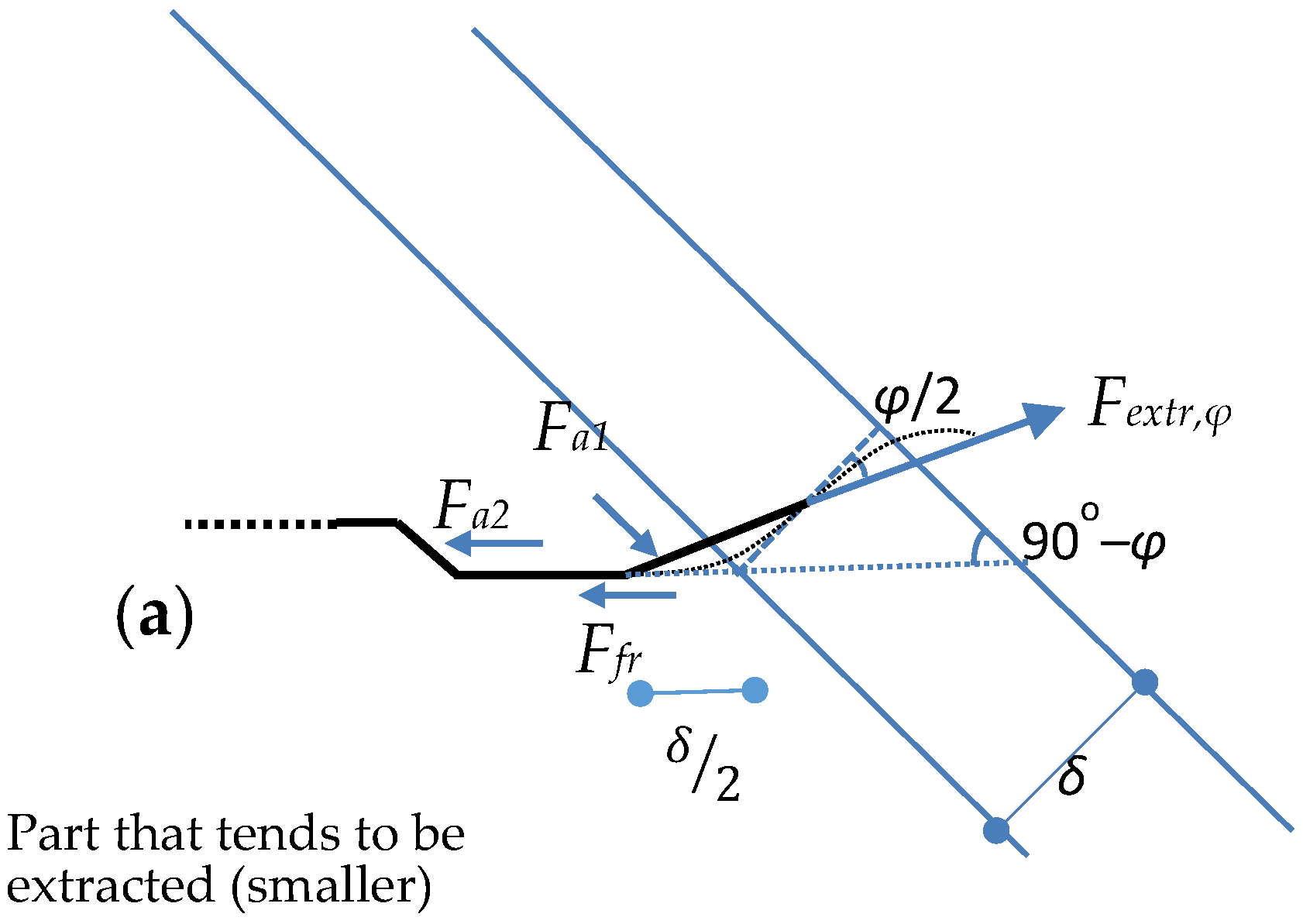
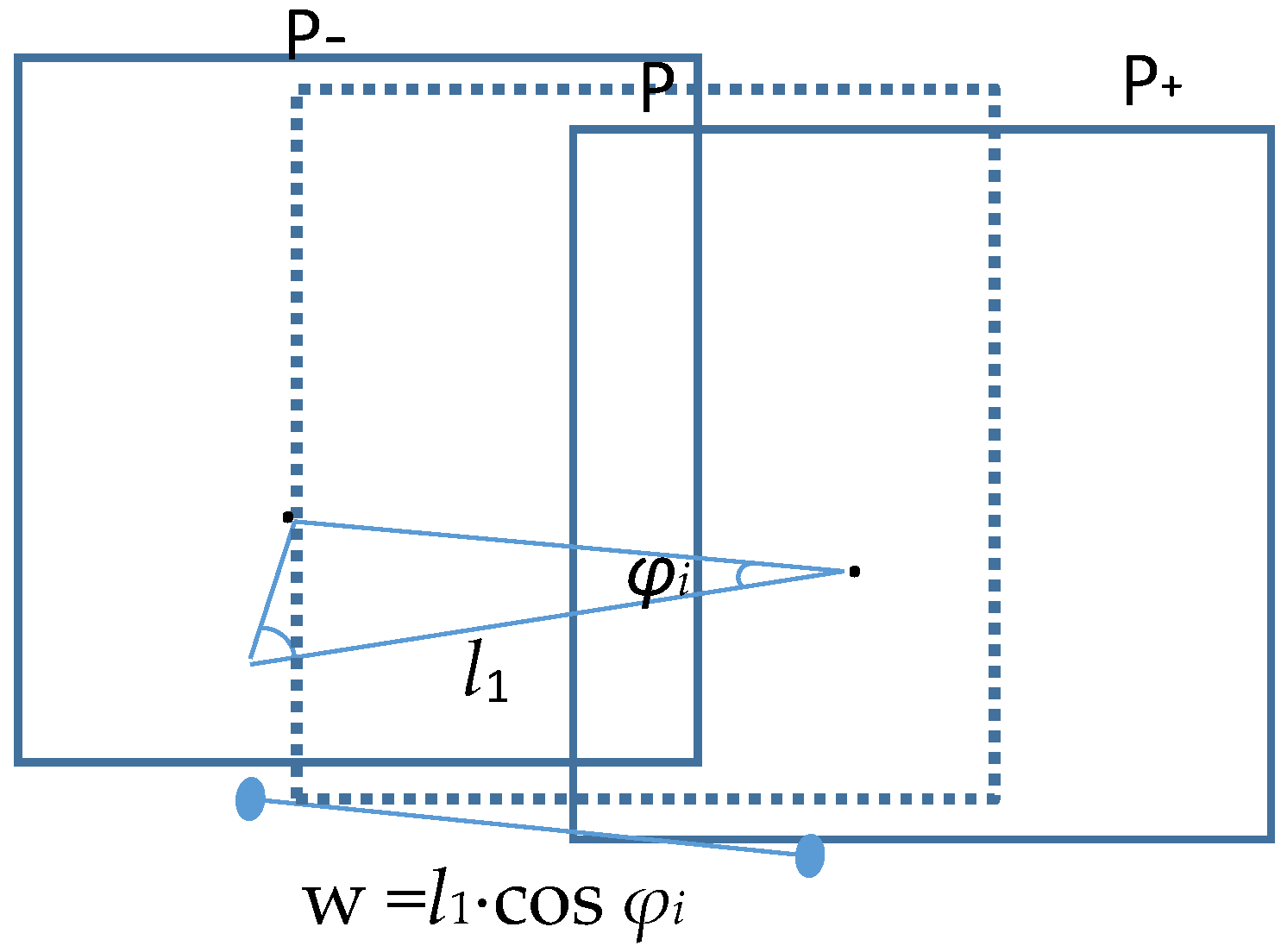
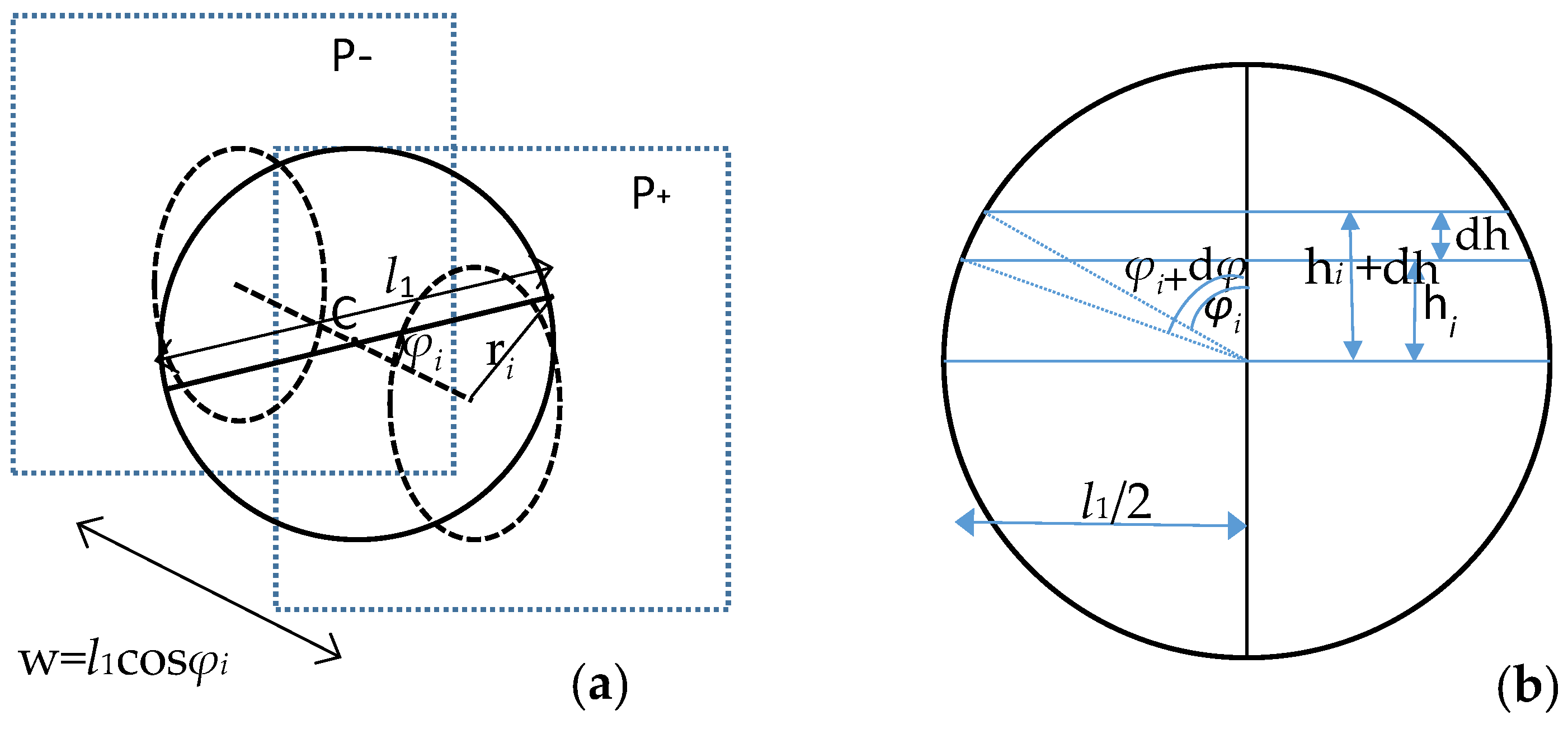

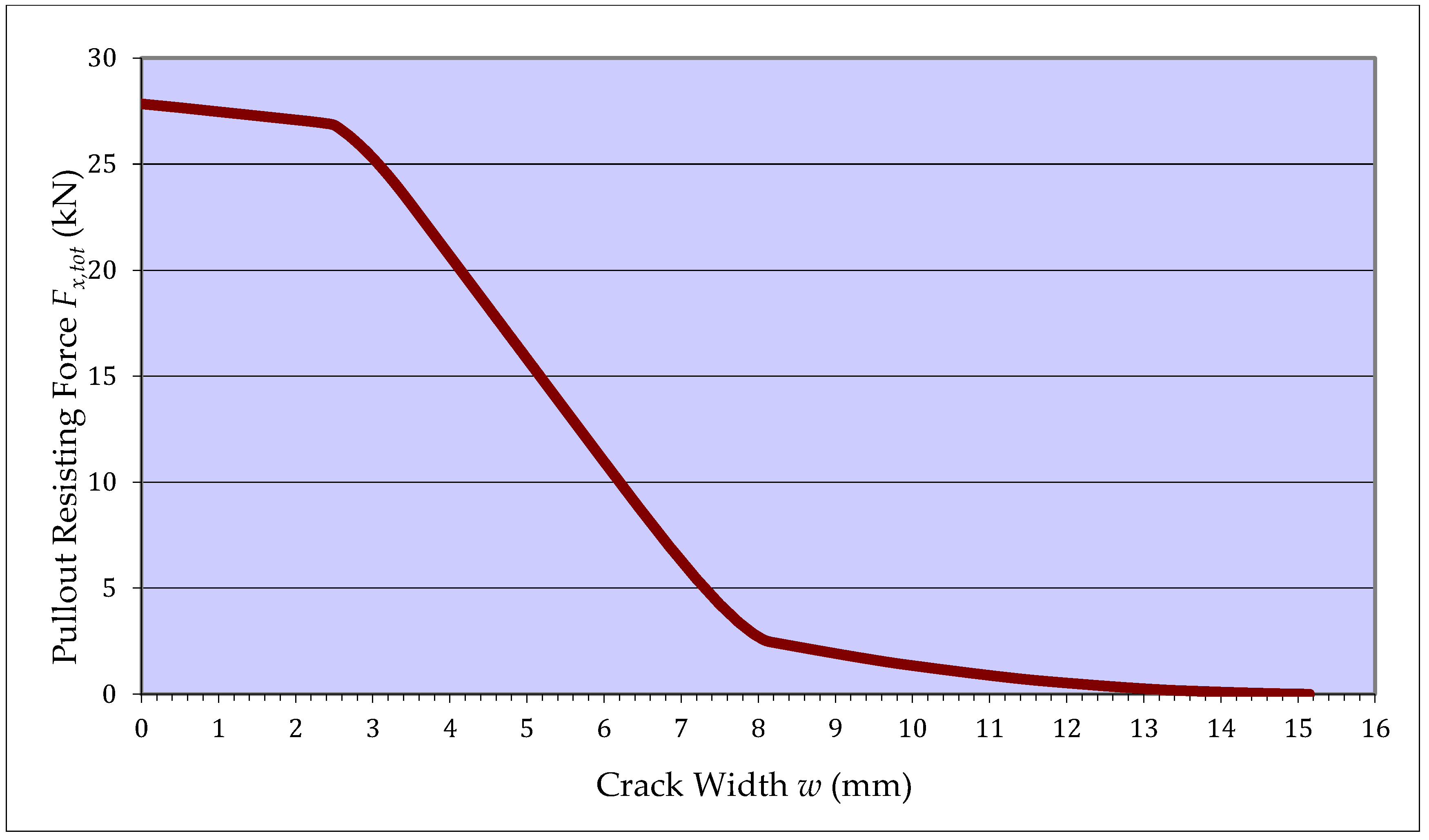
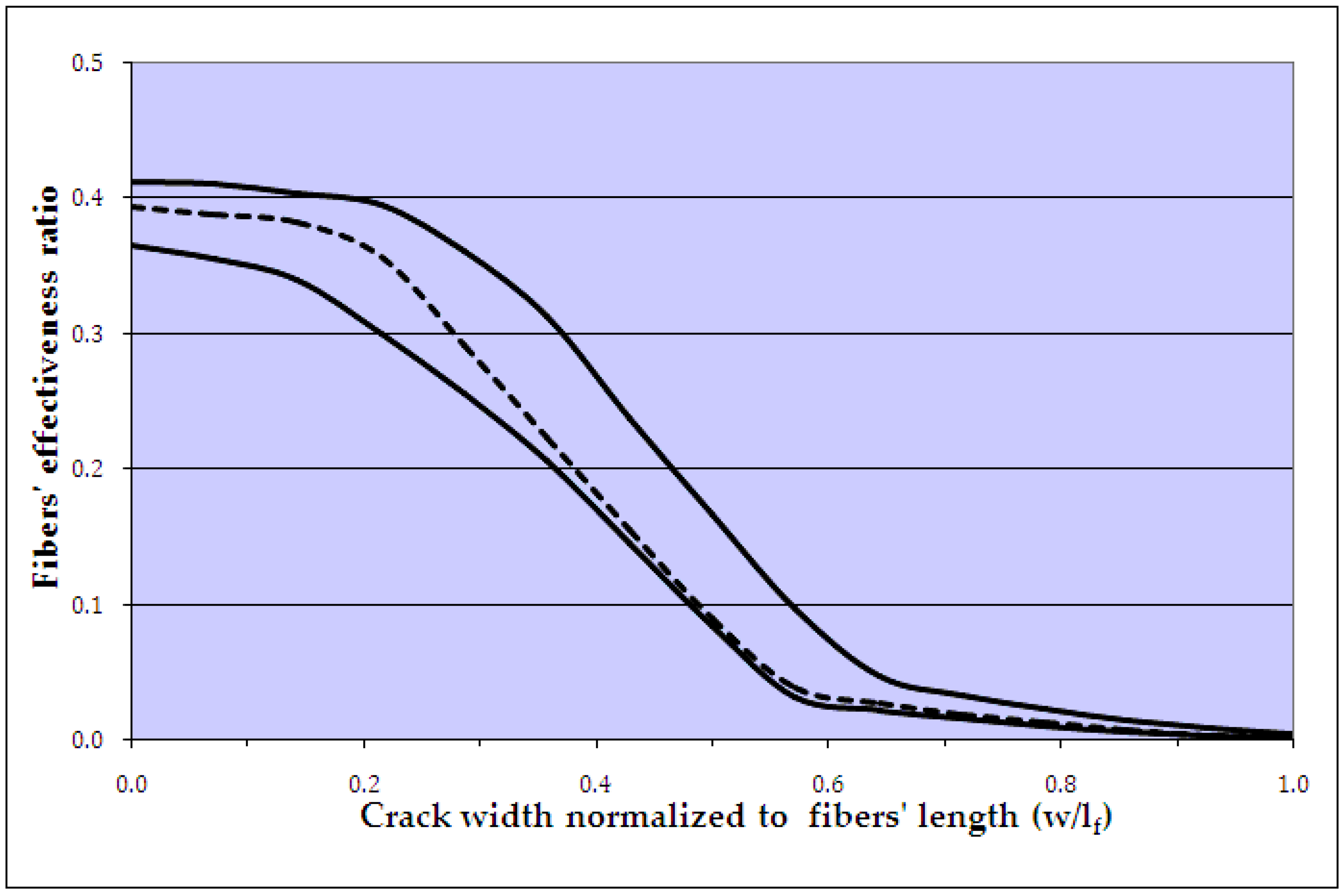
| Intervals for ϕ | Number of Fibers Nϕ |
|---|---|
| (0°–10°) | 2.12 |
| (10°–20°) | 6.30 |
| (20°–30°) | 10.29 |
| (30°–40°) | 13.97 |
| (40°–50°) | 17.22 |
| (50°–60°) | 19.95 |
| (60°–70°) | 22.08 |
| (70°–80°) | 23.53 |
| (80°–90°) | 24.27 |
| Total | 139.74 |
| Crossing Point | Length of Middle Part l1’ (mm) | Total Length lav (mm) | Total Pullout Force B (kN) | Participation Factor |
|---|---|---|---|---|
| 0 (at the hook) | 0 | 8.089 | 0.1646 | 78.8% |
| l1/8 | 1.75 | 9.839 | 0.1758 | 84.1% |
| l1/4 | 3.5 | 11.589 | 0.1869 | 89.4% |
| 3l1/8 | 5.25 | 13.339 | 0.1980 | 94.7% |
| l1/2 | 7 | 15.089 | 0.2091 | 100.0% |
| Crossing Point | Bond | Compressive Resistance | Friction | |||
|---|---|---|---|---|---|---|
| Fbd(kN) | Percentage | Fα(kN) | Percentage | Tfr(kN) | Percentage | |
| 0 | 0.0513 | 31.2% | 0.0664 | 40.3% | 0.0469 | 28.5% |
| l1/8 | 0.0624 | 35.5% | 0.0664 | 37.8% | 0.0469 | 26.7% |
| l1/4 | 0.0735 | 39.4% | 0.0664 | 35.5% | 0.0469 | 25.1% |
| 3l1/8 | 0.0846 | 42.8% | 0.0664 | 33.5% | 0.0469 | 23.7% |
| l1/2 | 0.0957 | 45.8% | 0.0664 | 31.8% | 0.0469 | 22.4% |
| Angle ϕ (°) | Maximum Axial Force Per Fiber (kN) | Coefficient Perprendicular to Crack (kN) | Maximum Crack Width before Fiber Extraction (mm),in Accordance to Embedded Length | ||||
|---|---|---|---|---|---|---|---|
| 0 (hook) | |||||||
| 5° | 0.1946 | 0.1435 | 6.00 | 7.30 | 8.55 | 9.90 | 11.15 |
| 15° | 0.1994 | 0.1582 | 6.45 | 7.85 | 9.25 | 10.65 | 12.00 |
| 25° | 0.2028 | 0.1710 | 6.85 | 8.35 | 9.80 | 11.30 | 12.75 |
| 35° | 0.2046 | 0.1815 | 7.20 | 8.80 | 10.35 | 11.90 | 13.45 |
| 45° | 0.2048 | 0.1892 | 7.50 | 9.15 | 10.75 | 12.40 | 14.00 |
| 55° | 0.2035 | 0.1941 | 7.75 | 9.45 | 11.10 | 12.80 | 14.45 |
| 65° | 0.2006 | 0.1959 | 7.95 | 9.65 | 11.35 | 13.10 | 14.85 |
| 75° | 0.1962 | 0.1946 | 8.10 | 9.80 | 11.55 | 13.30 | 15.15 |
| 85° | 0.1903 | 0.1902 | 8.15 | 9.90 | 11.65 | 13.40 | 15.15 |
© 2017 by the authors. Licensee MDPI, Basel, Switzerland. This article is an open access article distributed under the terms and conditions of the Creative Commons Attribution (CC BY) license (http://creativecommons.org/licenses/by/4.0/).
Share and Cite
Vougioukas, E.; Papadatou, M. A Model for the Prediction of the Tensile Strength of Fiber-Reinforced Concrete Members, Before and After Cracking. Fibers 2017, 5, 27. https://doi.org/10.3390/fib5030027
Vougioukas E, Papadatou M. A Model for the Prediction of the Tensile Strength of Fiber-Reinforced Concrete Members, Before and After Cracking. Fibers. 2017; 5(3):27. https://doi.org/10.3390/fib5030027
Chicago/Turabian StyleVougioukas, Emmanouil, and Maria Papadatou. 2017. "A Model for the Prediction of the Tensile Strength of Fiber-Reinforced Concrete Members, Before and After Cracking" Fibers 5, no. 3: 27. https://doi.org/10.3390/fib5030027





